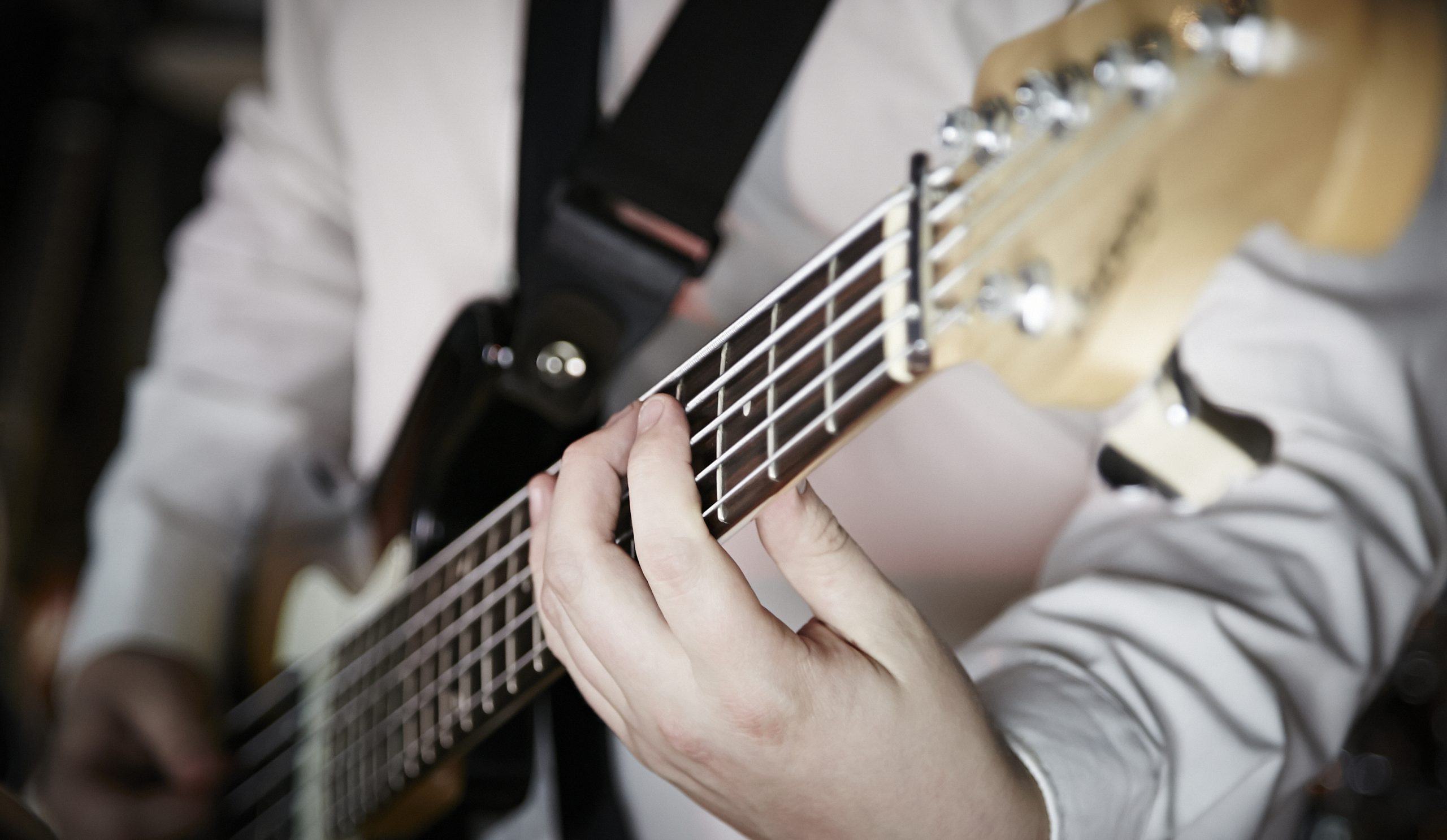Are you ready to take your bass-playing skills to the next level?
Then it’s time for you to learn the 7 modes!
These powerful musical tools will give your solos and melodies a rich sense of harmonic complexity that is sure to elevate any piece of music.
Plus, with our free downloadable bass guitar modes PDF guide, learning how to play these modal scales on bass guitar has never been easier.
So don’t hesitate – get started now and open up new possibilities in both improvisation and composition!
What are modes?
You can think of modes as being different sub-scales of an original scale. To create different modes you first need a parent scale, such as the major scale, and then, to get that parent scale’s modes, you need to complete one full cycle of all the parent scales notes using each individual note of the scale as a starting point.
For example, if the C major scale was our parent scale, we would do one full cycle from C (c d e f g a b c) to get the first mode, another from D (d e f g etc) and we would keep going until we have created a new scale or “mode” from each note of the original parent scale.
Why should you learn modes?
For bass guitarists, learning modes is an essential part of improving your technical ability.
Modes can help you expand your playing beyond major and minor scales, allowing you to craft beautiful solos that captivate audiences.
Plus, integrating them in your improvisations can add a lot of flavor to the sound without sacrificing technical proficiency.
By learning and understanding modes, bass guitarists are able to develop an understanding and appreciation for different music genres and ensure their playing will feel grounded and connected with any type of style they may encounter.
So if you’re a dedicated student of the bass, taking the time to learn about modes is key for developing a well-rounded technique!
As an experiment, we can start with the third fret of the C string and work through each mode.
Where do you start?
Learning modes can be a great way to expand your knowledge as a musician, but where do you even begin?
The best approach when it comes to exploring the world of modes is to start by diving into the theory and understanding the concept.
Once you’ve got the basics down, move on to learning the modes on your bass. It’s important to give yourself plenty of practice time so that you can get comfortable with each one.
Combine your theoretical understanding with experimentation and focused study, and before long your mode fluency will make you an even more versatile player!
I. The Ionian Mode (c d e f g a b c)
The Ionian mode is the major scale of music, also known as the major scale.
It’s easily recognized melodic pattern is an essential building block for other music modes such as the Dorian, Phrygian, Lydian and Mixolydian.
The Ionian mode consists of seven different degrees starting from a root note. Each degree forms a full chart of notes that when sequenced in order creates a harmonious phrase.
By emphasizing certain sections within the scale, musicians are able to create complex emotions which can give personality to any genre or style of music.
To achieve an understanding of the Ionian mode and its importance to modern music theory it’s best practice to understand how this mode integrates with other common musical scales.
When in the key of C, this mode would be known as C ionian.
II. The Dorian Mode (d e f g a b c d)
Creating a dorian mode in music is a great way to switch up the sound of any piece.
To create this unique tonality, start by playing scale degrees one through seven of the natural minor scale (Aeolian).
From there, sharpen scale degree six (B) to achieve the characteristic Dorian sound.
For example, if you were creating a D minor scale, your notes would be: D – E – F – G – A – B flat – C sharp – D.
But in the Dorian mode the 6th degree would be raised to B natural.
When made from the parent key of C, you’ll get a D dorian scale.
III. The Phrygian Mode (e f g a b c d e)
To create a phrygian mode, you’ll need to start with your principal scale. In music theory, this will be the major scale of the same key you’re looking to play in.
For example, if you want to play in the key of C, you’d use a C major scale as your foundation.
Once that’s established, there are three notes within the major scale that become the key distinction in creating a phrygian mode: flatten the second, third and sixth note.
When these notes are lowered one half step (or semitone) then it creates a phrygian scale or mode – which provides a unique kind of atmospheric sound for composition, solos, licks and improvisation!
With this simple alteration, you’ve got yourself a strong foundation for creating some great musical work in the Phrygian mode.
When made from the parent key of C, you’ll get E phrygian.
IV. The Lydian Mode (f g a b c d e f)
The lydian mode is a major scale with a raised or sharpened 4th degree. It’s also built from the 4th degree of its parent major scale.
To create a lydian scale from the parent C major scale, go to the 4th degree of the C major scale (F) and complete one full rotation of all the notes from F back to F (f g a b etc).
When made from the parent key of C, you’ll get F lydian.
V. Mixolydian mode (g a b c d e f g)
The Mixolydian mode is a major scale with a raised or flattened degree. It’s also built from the 5th degree of its parent major scale.
To create a Mixolydian scale from the parent C major scale, go to the 5th degree of the C major scale (G) and complete one full rotation of all the notes from G back to G (g a b c etc).
When made from the parent key of C, you’ll get G mixolydian.
VI. The Aeolian Mode (a b c d e f g a)
The 6th mode is the Aeolian mode which is also known as the natural minor scale. It has flattened 3rd, 6th and 7th degrees which give it a very dark and sombre sound.
This is a very popular scale.
VII. The Locrian Mode (b c d e f g a b)
The final major scale mode is the locrian mode. It’s built from the 7th degree and has a flattened 2nd, 3rd, 5th, 6th and 7th.
This is one of the least used major scale modes due to it’s harsh and angular sound.
When made from the parent key of C, you’ll get B locrian.
What mode works where?
Knowing chord-scale relationship theory is essential for bass players to mix up their sound!
It can help you identify which major scale mode pairs with a certain chord and allow you to add in flavorful little runs that are totally unique.
Knowledge of these scales will help you bring life out of chords and give your playing some extra depth and color.
And if you’re the kind of person that loves theory, learning the relationship between chords and scales will make it easier for you to identify patterns and understand why things work together.
Learning this theory is an important step in improving as a bass player!
How do I use the modes on bass guitar?
There are many different ways to use modes on the bass. You can use them in riffs, walking lines, solos and fills but all of these contexts require an understanding of some basic theory first.
Let’s take a look at it now.
Major or minor?
The easiest way to tell if a mode is major or minor is by looking at the interval between the root note of any given mode and the third degree of that same mode.
If this interval is a major third then the mode itself will always be some kind of major mode.
Lydian mode, for example, has a major third and is a major mode.
However, E phrygian has a minor third and will be a minor mode.
This is useful when learning which mode goes over which chord as we’ll discuss later.
Chord Tones
A great way to imply the sound of a mode is to use the chord tones of the underlying chord of each mode and mix them with some of the unique “character notes” of each mode.
To find the underlying chord of a mode look at the root, 3rd, 5th and 7th and see what chord they form.
If we look at G mixolydian for example, G is the root note, B is the major third, D is the perfect 5th and F is the flat 7th. The root, 3rd, 5th and 7th are known as the chord tones.
These create a dominant 7th chord which means that G mixolydian is a good scale choice to play over G dominant chords.
If you use these chord tones and mix them with other notes from the mode such as the 9th or 11th, you can bring out the modal sound using mostly chord tones.
Have fun!
Improvisation, jam sessions and composition are three excellent methods for learning how to use musical modes.
These exercises allow you to explore the modes in a creative way and learn firsthand how modal elements interact with each other.
Your journey of discovery will take you through a vast range of possibilities and subtleties that cannot be obtained from mere theoretical study.
Experimenting with musical modes through improvisation, jam sessions and composition provides an immersive experience that can bring your music knowledge and understanding to a whole new level.
You’ll find yourself picking up tunings, chords, melodic patterns, song structures and much more – all while having fun! In short, there is no better way to explore the fascinating world of musical modes than through experimenting with them in these highly engaging ways.
What are 7 modes?
Ionian, dorian, phrygian, lydian, mixolydian, aeolian and locrian mode.
What is Dorian mode on bass?
It’s a natural minor scale with a raised 6th.
Why are there only 7 modes?
There are only 7 modes of the major scale because the major scale only has seven notes and, since you can only build modes from each note of a parent scale, there can only be 7 major scale modes.
However, you can also get modes of other parent scales like the harmonic and melodic minor scales so, in reality, there are far more than 7 modes.


Leave a Reply